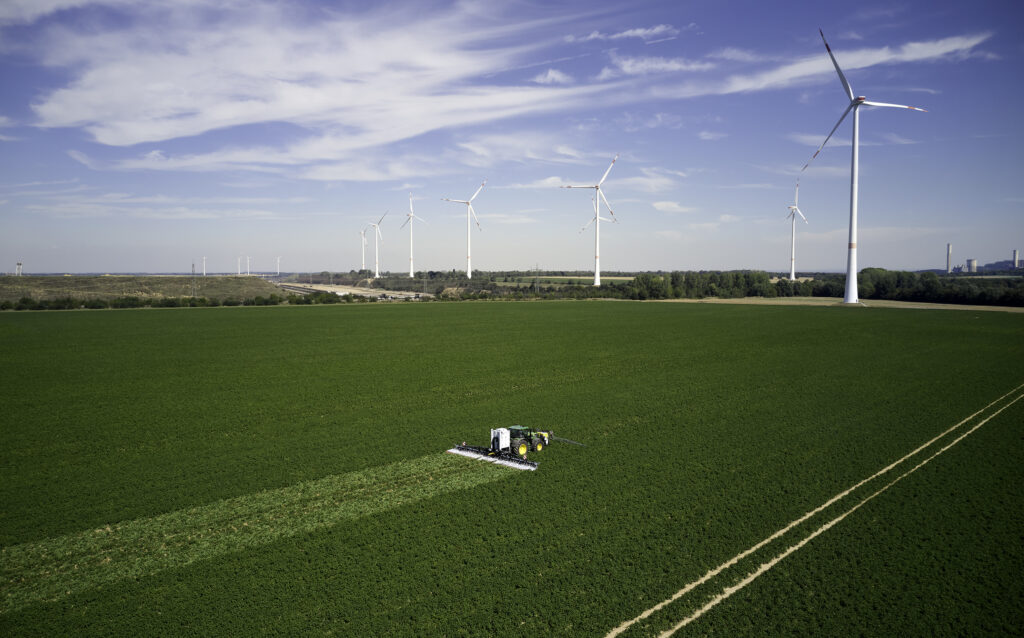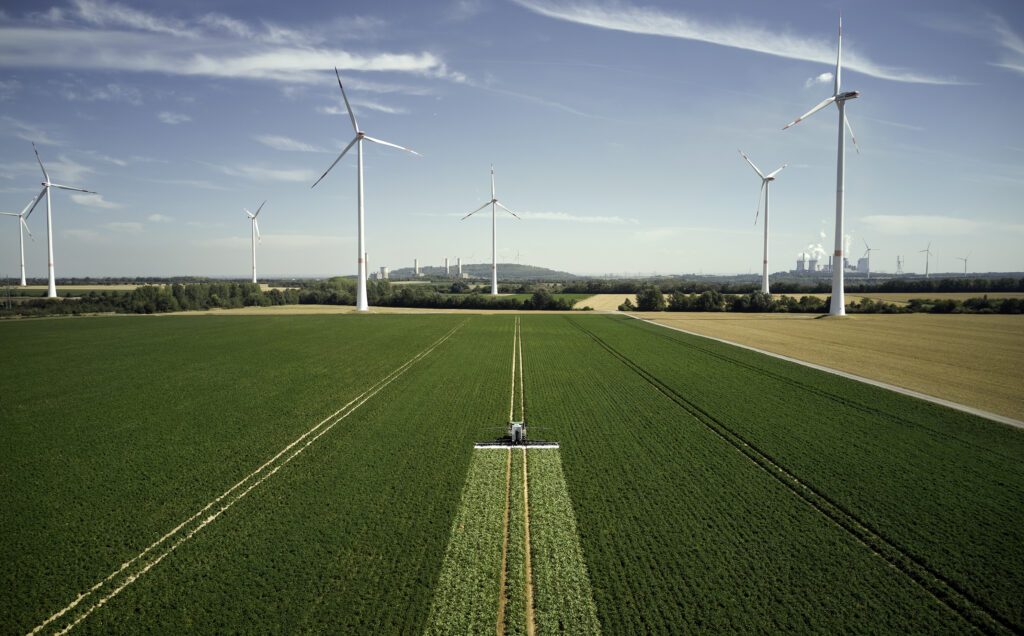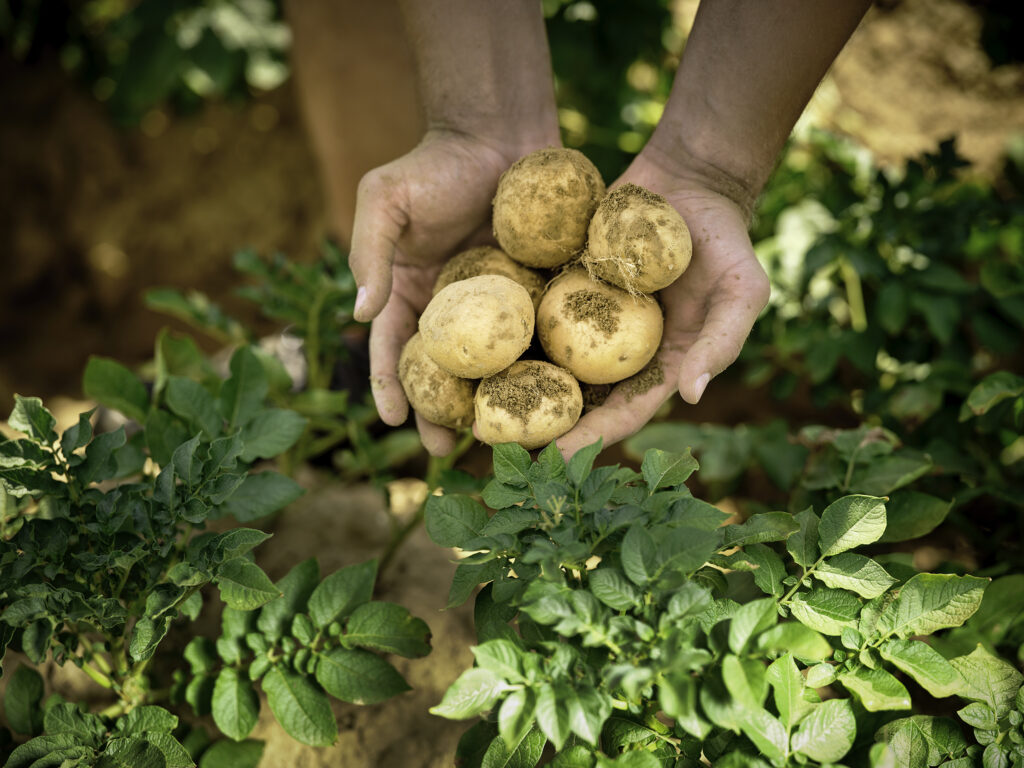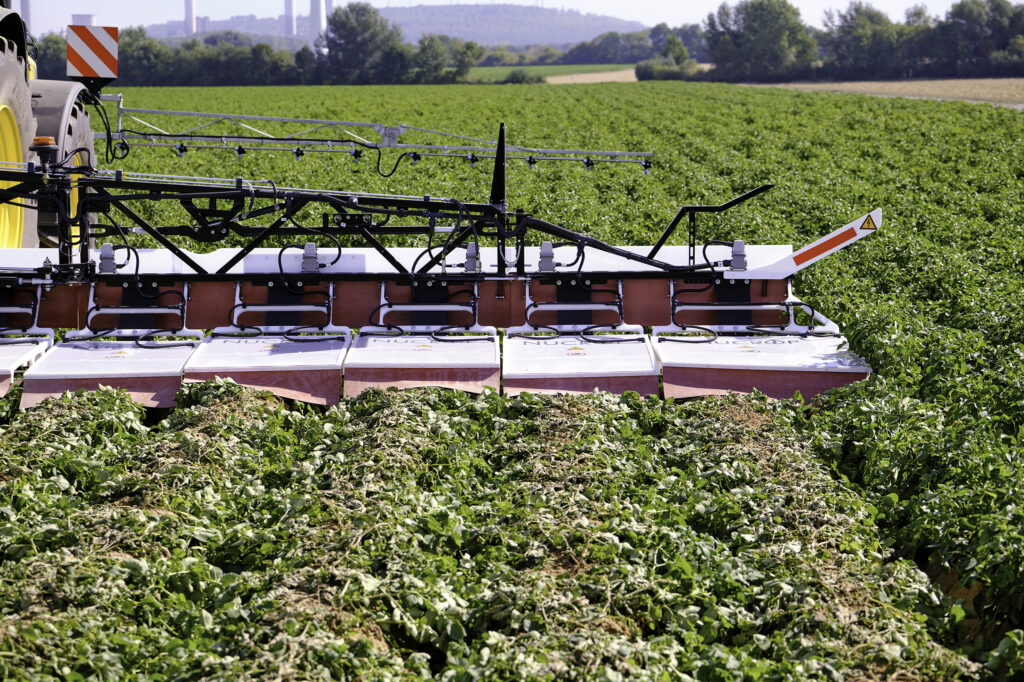Sustainability in Potato Desiccation Potato Desiccation Methods Overview
Chemical Desiccants:
- Common Types: Sulfuric acid, diquat.
- ESG Impact: Negative. Chemical methods pose environmental risks through runoff that can contaminate water sources. They also raise health and safety concerns for workers due to chemical exposure.
Mechanical Topping:
- Common Types: Flail mowing.
- ESG Impact: More neutral. This method reduces chemical use but increases carbon emissions and soil compaction due to the use of heavy machinery.











crop.zone’s Method Potato Desiccation
Technology Description:
- crop.zone combines conductive electricity with a proprietary natural solution to accelerate the desiccation process.
ESG Scoring:
- Environmental: High score. crop.zone’s method minimises environmental impact by reducing chemical use and lowering carbon emissions compared to traditional mechanical methods.
- Social: Positive impact by enhancing worker safety with less exposure to harmful chemicals.
- Governance: Favourable, as the innovative approach aligns with global sustainability goals and potentially improves regulatory compliance.
Comparative Analysis
Compared to traditional chemical and mechanical methods, crop.zone’s technology offers a more sustainable alternative for potato desiccation. By eliminating harsh chemicals and reducing mechanical soil disturbance, crop.zone provides an environmentally friendly solution that aligns well with increasing global sustainability demands. Furthermore, the reduction in chemical usage improves social aspects by safeguarding worker health and supports governance through compliance with stricter environmental regulations.
As we stand on the brink of a significant shift in agricultural practices, it is imperative that we reassess our methods for crop management, particularly in potato desiccation. Traditional methods have long relied on chemical and mechanical processes, each carrying its own environmental and societal impacts. However, the tides are turning towards more sustainable and responsible farming practices.
In this context, I would like to introduce you to a revolutionary method developed by crop.zone, designed to align with our collective pursuit of sustainability. Unlike conventional chemical desiccants, which pose risks to both the environment and human health, crop.zone uses a combination of conductive electricity and a natural solution. This method not only curtails the need for harmful chemicals but also significantly reduces carbon footprints compared to mechanical methods.
Evaluating through an ESG lens, crop.zone’s approach scores remarkably high on environmental considerations by mitigating pollution and enhancing soil health. Socially, it promotes a safer working environment free from chemical exposure. From a governance perspective, adopting such innovative methods can ease regulatory challenges and align operations with global sustainability targets.
It is crucial for us, as stewards of the land, to adopt practices that ensure the longevity and health of our soils and ecosystems. By embracing technologies like those offered by crop.zone, we are not only investing in our immediate agricultural needs but are also paving the way for a more sustainable and equitable agricultural future.
Let us lead the change by integrating more sustainable practices into our farming routines, ensuring that we meet our production needs without compromising the health of our planet or our communities.
